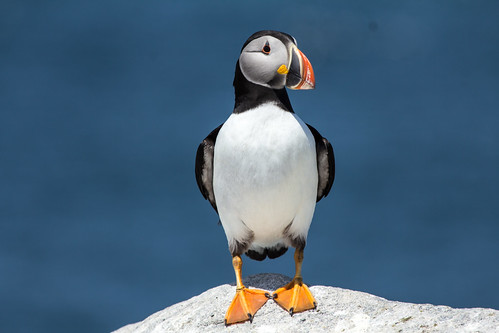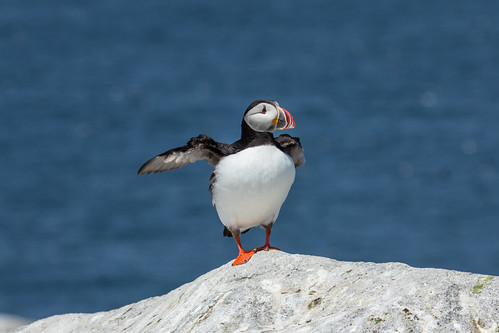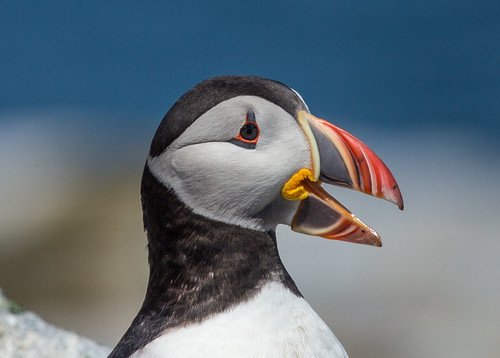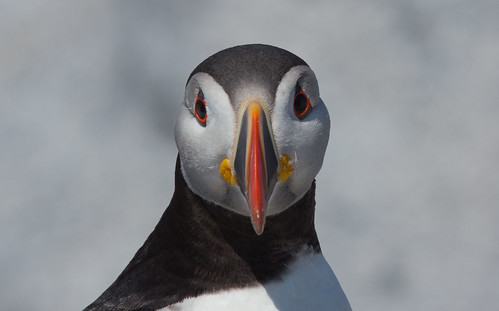Puffins are distinctive thanks to several physical features critical to their fish-eating lifestyle.
All three species of puffins have about the smallest wings possible for keeping their round little bodies aloft. They must flap them very rapidly to stay airborne. Those tiny wings, powered by thick, myoglobin-rich pectoral muscles, can also beat rapidly through water. Unlike loons, puffins use those powerful wings to propel themselves underwater, chasing down lots of tiny fish in a single dive. Those thick pectoral muscles contribute to the puffin’s thick, round shape.
Except when bringing food to the nest, puffins catch one fish at a time and eat it underwater. Parents probably eat one or two fish underwater before gathering a number more to bring back to the nest, but that's usually impossible to observe. That is why so very much more is understood about the diets of nestling puffins than adults.
During nesting, puffins travel back and forth between where fish are plentiful and their burrow. They fish near their nest colony when suitable prey is plentiful right there but, when fishing is better further away, they may travel 60 miles or more from the nest. They can’t afford to waste more time and energy commuting than necessary, so in addition to specializing on small schooling fish, puffins have important physical adaptations for carrying as many as possible on each trip. The tongue and the roof of the mouth both bear inward-facing spines.
The moment a puffin grabs one fish, the quick-acting tongue tip instantly pulls it as far back as possible, holding the fish fast between the roof of the mouth and the surface of the muscular, spiny tongue. The bill itself isn’t involved in holding the fish, so the bird can instantly open it to grab another, and another, as the busy tongue tip keeps pulling each one up and back. Puffins are often photographed carrying a dozen fish or more to their nest burrows. The record is an amazing 61 fish brought to the nest in a single trip by one Atlantic Puffin.
 |
| Atlantic Puffin carrying lesser sand eels. I wish I'd taken this photo! It was taken by Charles J. Sharp CC BY-SA 4.0, via Wikimedia Commons |
To carry more than a few fish at a time depends on another critical feature—that colorful circle at the corner of the beak.
If you think about high school geometry, most bird bills open at a simple angle, the corner of the bill forming a sharp vertex. But the corner of a puffin bill is stretchy and flexible, allowing the upper and lower bills to stay parallel even when held fairly far apart, so a lot of fish can be held securely along the entire length without fish near the gape getting sliced into.
The one important constraint of this method of fishing is that puffins are designed for catching and carrying small schooling fish, such as herring, hake, sand-lance, capelin, and arctic cod. The combination of overfishing and warming seas has drastically changed northern fish populations. When not enough tiny fish are available, puffins may bring to the nest fish too large for chicks to swallow, leading to the chicks starving even with plenty of food right in front of them—a horrifying tragedy. Puffins deserve so much better.






